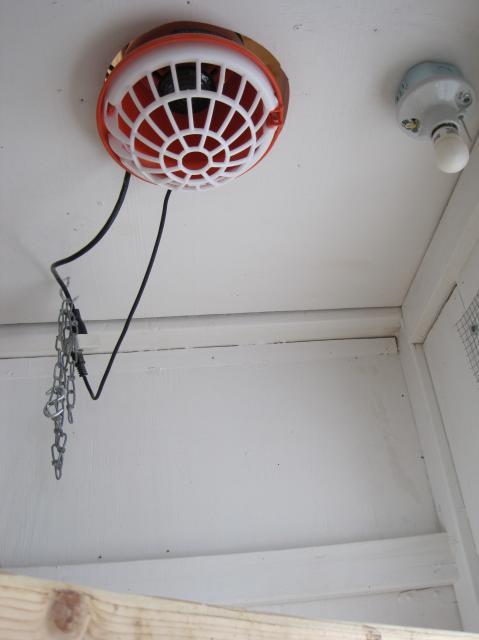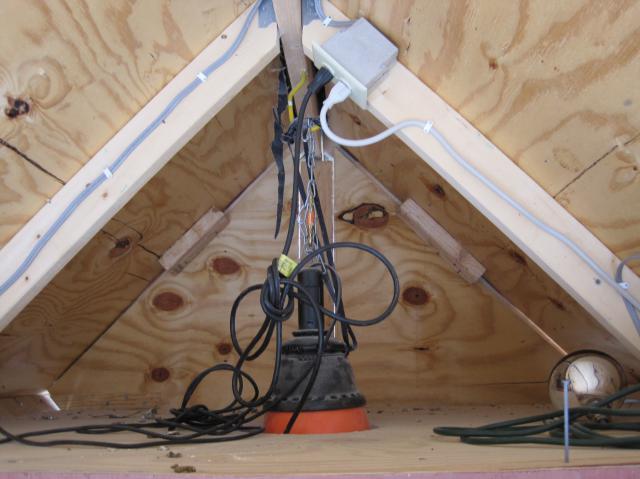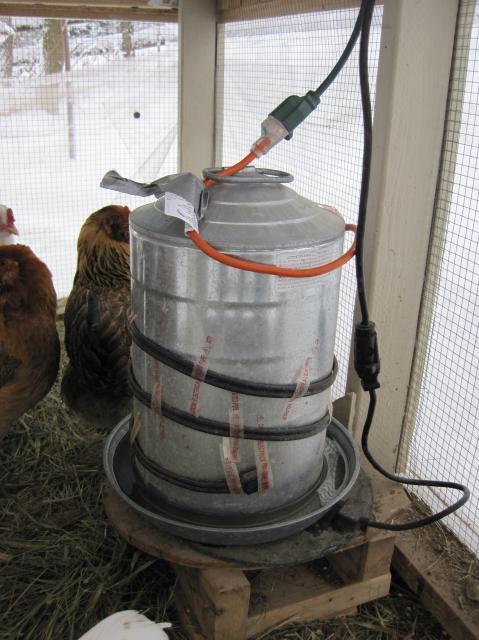I've been keeping up somewhat with Mrs. AK-Bird-Brain's thread on why, in most cases, adding heat to a coop is not needed (she pointed out her original post advice was aimed primarily at folks in fairly mild, southern climates). Of course "mild" is most definitely a perspective thing, just as "cold" is. Personally, I think you guys/gals up in Alaska and similar areas must be part polar bear, because 30 degrees F means COLD to me, while you guys seem to look on it as a warm breeze...lol.
 My friend from Florida comes to visit me and bundles up like she's freezing to death when it's 45 degrees. See? Perspective! The fact of the matter is though, partly because I'm a softy, I will be adding a little heat to my coop on cold nights (for me this means nights in the mid 20s and below), and I know, based on posts I've read, that others do/will be doing the same.
My friend from Florida comes to visit me and bundles up like she's freezing to death when it's 45 degrees. See? Perspective! The fact of the matter is though, partly because I'm a softy, I will be adding a little heat to my coop on cold nights (for me this means nights in the mid 20s and below), and I know, based on posts I've read, that others do/will be doing the same.
Coop fires due to heating and/or lighting are a reality, so safety is critical. I'd love it if people who do use heating devices inside their coops would share what they do to make sure they're being safe. Folks who don't use electrical devices inside their coops can chime in too. What are some of the "safer" devices out there, and what are some of the riskier? After all, we all care about our chickens, and hate to hear that even one person lost birds to a coop fire. Add safety advice or helpful tips for folks who use bulbs for keeping water unfrozen or to extend daylight hours....
Here are some things I've learned from BYC:
* The self-contained flat panel heaters seem a very safe bet for adding a little heat/warmth. Some are pricey, some are pretty reasonable.
* Lamps are a cheap option, whether using a heat or regular bulb, but these seem to start most of the fires reported in coops. So if using these, they
need to be extremely well secured, on a chain, with a back-up wire/chain attached to a separate point. The bulb you're using needs to be rated
appropriately for its housing. The housing should have a guard. There should be plenty of clearance between the lamp and any surrounding objects,
at least 18 inches.
* While it may sound counterproductive, ventilation is still needed even if you choose to add heat.
* Be appropriate with your temperatures. As has been pointed out many times - what happens when/if you lose power? If your birds are use to
balmy tropical temps. in the coop and are suddenly thrust into freezing cold, it's going to be an unhealthy shock.
* Be prepared for an increase in your power bill. I will say running a fan this summer was more expensive for me than the lamp I used last winter.
* The Thermocubes are really helpful! They come in many ranges, including "On at 20/Off at 30" and "On at 35/Off at 45", and lower/higher ranges.
Please add more safety tips and helpful advice... Thanks!
This winter, DH has suggested using one of those self-contained oil type heaters (kind of look like an old radiator) I'm thinking this would be safer than a heat lamp??? What do you think??

Coop fires due to heating and/or lighting are a reality, so safety is critical. I'd love it if people who do use heating devices inside their coops would share what they do to make sure they're being safe. Folks who don't use electrical devices inside their coops can chime in too. What are some of the "safer" devices out there, and what are some of the riskier? After all, we all care about our chickens, and hate to hear that even one person lost birds to a coop fire. Add safety advice or helpful tips for folks who use bulbs for keeping water unfrozen or to extend daylight hours....
Here are some things I've learned from BYC:
* The self-contained flat panel heaters seem a very safe bet for adding a little heat/warmth. Some are pricey, some are pretty reasonable.
* Lamps are a cheap option, whether using a heat or regular bulb, but these seem to start most of the fires reported in coops. So if using these, they
need to be extremely well secured, on a chain, with a back-up wire/chain attached to a separate point. The bulb you're using needs to be rated
appropriately for its housing. The housing should have a guard. There should be plenty of clearance between the lamp and any surrounding objects,
at least 18 inches.
* While it may sound counterproductive, ventilation is still needed even if you choose to add heat.
* Be appropriate with your temperatures. As has been pointed out many times - what happens when/if you lose power? If your birds are use to
balmy tropical temps. in the coop and are suddenly thrust into freezing cold, it's going to be an unhealthy shock.
* Be prepared for an increase in your power bill. I will say running a fan this summer was more expensive for me than the lamp I used last winter.
* The Thermocubes are really helpful! They come in many ranges, including "On at 20/Off at 30" and "On at 35/Off at 45", and lower/higher ranges.
Please add more safety tips and helpful advice... Thanks!
This winter, DH has suggested using one of those self-contained oil type heaters (kind of look like an old radiator) I'm thinking this would be safer than a heat lamp??? What do you think??




